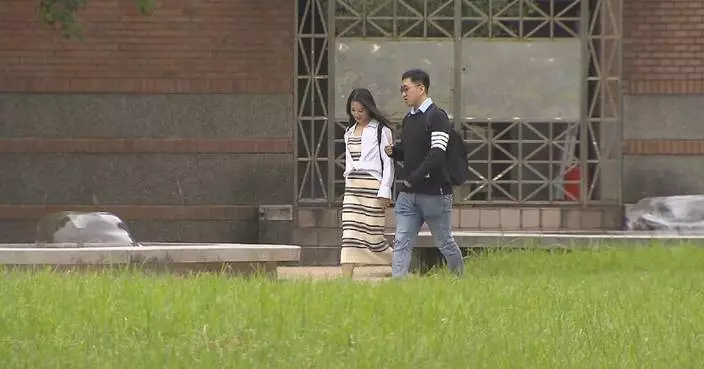Heavy rains in East Africa have killed at least seven children and left thousands homeless in Somalia, a United Nations humanitarian agency said.
In the country’s central regions, local authorities said hundreds of families were stranded.
Residents of the central Somali town of Beledweyne said the rain at night caught them off guard, giving them little time to gather their belongings and move to a safe area, but their household necessities and livestock were ruined or lost.
"Our houses are full of water. We could not even manage to salvage our utensils and little food we had. We don't also have shelter from the ongoing rain and the cold weather," said Dahabo Nur, one displaced resident.
"It was unexpected during the night. I managed to rescue my children and some few belongings but unfortunately the water swept away my donkey and five goats, as you can see, we managed to save only those two goats," said Elmi Fidow, another displaced resident.
Somalia's disaster management agency has warned of more torrential rains, especially in riverine areas, and urged people to move to safer areas. Officials say they're working to help stranded people with necessities.
"This was an emergency and there was no plan in place to relocate these displaced people in case of such an unexpected situation. They now don't have access to basic needs such as clean water, health and some are in danger of reptiles but we want to take that responsibility now and do everything in our capacity to help them," said Abdullahi Salad, Mayor of Beledweyne.
Climate change and the El Nino weather pattern have brought frequent extreme weather events, including floods and massive droughts, to the East African country, adding to the fragility of its economy.
Somalia now relies heavily on international support for disaster management, and humanitarian agencies have allocated three million US dollars to mitigate the worst of the problems this time around.

Flash floods displace hundreds of families in central Somalia

Flash floods displace hundreds of families in central Somalia

Flash floods displace hundreds of families in central Somalia

Flash floods displace hundreds of families in central Somalia
Chinese scientists have recently worked together and rebuilt the face of an ancient Chinese ethnic minority emperor via cutting-edge DNA technology.
Emperor Wu of the Xianbei-led Northern Zhou Dynasty (557-581), also known as Yuwen Yong, was an ambitious leader who died at 36. He belonged to the Xianbei nomadic group, which originated from the Mongolian Plateau.
The tomb of the emperor was discovered in 1993 in a village of the city of Xianyang in northwest China's Shaanxi Province. His skull and bones were discovered during an excavation held in 1994 and 1995 at the site of his tomb.
In late March this year, scientists led by the Shaanxi Provincial Institute of Archaeology and the Institute of Archaeological Science of Fudan University managed to decode key features of the emperor and speculate about his cause of death. The emperor might have died from chronic arsenic poisoning due to long-term use of a pellet, which was believed by ancient people to achieve eternal life.
"First, the skeleton can be used to determine age. Second, in terms of age and gender, some pathological research can also be done to see if he had any fractures or other (diseases)," said Zhang Jianlin, a researcher from the Shaanxi Provincial Institute of Archaeology.
Obtaining high-quality genomic data is crucial for restoring the face. Through DNA paleogenomics techniques and optimized DNA extraction, database building and capture methods, more history was revealed.
"First, we have done the shorter fragments enrichment method, which is a DNA extraction method. In addition, we have developed some more sensitive database building method suitable for ancient samples with short fragments. You can regard it as a method to amplify the genetic signal, the extracted DNA. The third is that we have developed a capture method that is more suitable for this kind of highly degraded ancient samples. So we have optimized and improved our approach from three aspects at the same time," said Wen Shaoqing, an associate professor of the Institute of Archaeological Science of Fudan University.
The reconstructed face showed that Yuwen Yong had black hair, yellow skin and brown eyes, while his appearance was typical for people from East or Northeast Asia.
Wen said that with the help of the DNA technology, the accuracy of facial restoration can reach 90 percent.
"As for the accuracy of (facial restoration), the current situation is that if there is a skull as a basis, its accuracy will be relatively high," said Wen.

Scientists rebuild face of ancient emperor using advanced DNA technology













